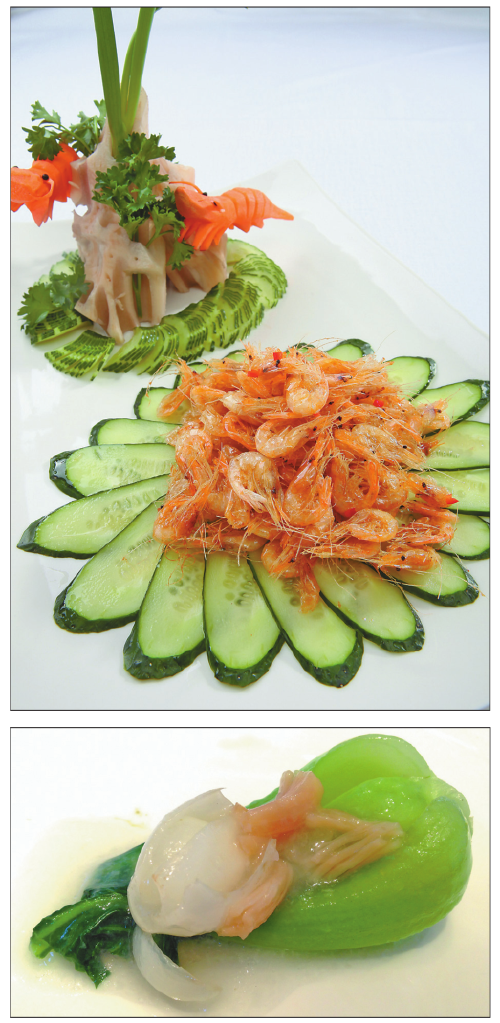This is the wild northern grassland where Mongolian ponies bearing the sons and grandsons of the Great Khan had thundered on the warpath. It's a lot quieter these days and full of tasty surprises, as Pauline D. Loh discovers at the dinning table.
|

|
| White prawns (top) and mitang cabbage (above) are recommended. |
It would be very hard to tempt me with lamb, I told myself at the end of six days in Inner Mongolia. As delicious as the lamb here was, I had just about reached my quota for the month, maybe the year. And then Chef Luo Gang came in bearing a platter of lamb breast.
This is the best part of the animal reserved only for special guests. The chef said as he whipped out a sharp little knife with a gleaming bone handle. He then proceeded to shave little slivers of white from the breastbone, and carefully placed them on my plate.
It was a very tactile experience driven by the determination to identify taste and texture, and I kept chewing until I finished every slice.
It did not taste like fat, although it looked like fat, and it was so soft that it was hard to think of it as bone or even cartilage. It did not have the pungency of lamb, and dipped into the little saucer of pickled wild flowering chives, it was ... delicious.
Luo Gang stood and beamed approvingly as we ate every morsel, and then made his way back into the kitchens, leaving his bone-handled knife stuck upright on the lamb breast.
My husband, who spent the better part of his youth in Inner Mongolia, had told me that rituals and showmanship were very much a part of the Mongolian character and that hospitality is the most important tradition. Chef Luo certainly demonstrated that facet with pomp, and style.
